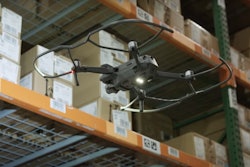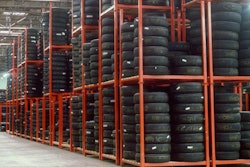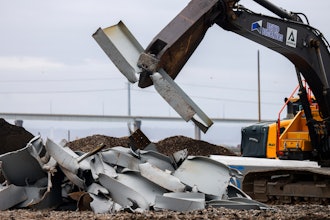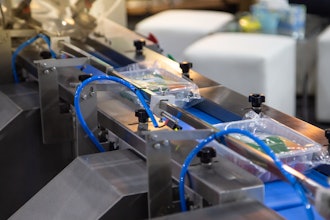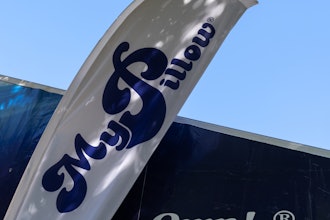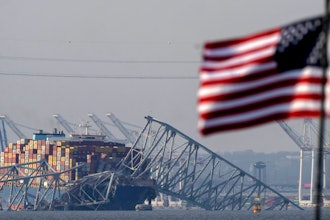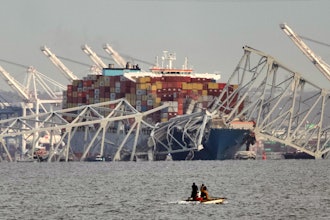What if your yard management system (YMS) played like a video game? You open the gaming window and see orders ready-to-ship, as they are located in the yard. Each stack in the yard is color-coded by filters you select. Green means ready to ship. Yellow is pending. Red represents tomorrow's orders. A click on any illustration opens the content details in a sidebar.
Suddenly, a trailer enters the yard from the edge of the screen, identified by an RFID reader at the gate. Its status is flashing, so you know you have some maintenance to perform — a broken door hinge perhaps. You click and drag the trailer to the maintenance bay, automatically sending an order to the driver and the maintenance team, alerting each of their assigned tasks as reported by onboard sensors.
ALSO READ: 3 Ways to Gain Full Visibility and Control of Supply Chain Operations
Meanwhile, a back-up at dry dock No. 4 sets off worker alerts. Nearby crew members receive the signal to clear the bottleneck. The timer in the corner of the screen shows the carrier due for pick up in 20 minutes. A click and drag re-routes the scheduled outbound order to dry dock No. 2, and everything stays on schedule.
Visualizing Your Future
This is the way yard management was meant to be. Given the right visualization capabilities and an intuitive, graphical interface — integrated with your warehouse management system (WMS) and transportation management system (TMS) — you would be able to:
- Efficiently schedule inbound and outboard loads and trailers to optimize available yard and dock space
- Intuitively manage maintenance and upkeep of trailers and other business assets
- Effectively manage third-party trailers, drivers and loads from entry to exit
- Coordinate inventory to be stored or picked, resolving slotting issues on-the-fly
- Consolidate goods in optimal locations for improved seasonal access
- Meet cycle counting and other quality requirements using automated workflows that play out spontaneously on your screen
As it stands, trying to manage these complex operations with spreadsheets, query structures, reports from legacy systems, and manual processes dependent on tribal knowledge only adds frustration, cost and delays to the operation.
Playing to a New Breed of Supply Chain Worker
The better way would be to manage your warehouse and yard using an integrated system capable of coordinating data and activities in a consistent fashion, drawn on business rules and workflows that you create and manage. Better yet, having all of that available in graphic representation, visualized on a single screen, would be an ideal way to work — far more intuitive and user-friendly, and far more effective, considering the need to make quick decisions on the best available information in today's fast-moving supply chain/distribution business.
The "geek" world actually has a term for it — “gamification" — defined as the application of game-like thinking and mechanics in a non-game context. Everything you need to know to operate your warehouse and yard presented on a fun, engaging, active video screen with timers, point-scoring and various rules of play, designed to immerse the user in the action at a heightened level of awareness and involvement.
Don't laugh. The world's most digital-savvy generation, now permeating a modern workforce near you, has grown up on this style of engagement. In fact, by 2020, the world will have its first full generation of "digital natives," people who have never known anything but a digital life, and have next-to-zero experience in any other way of transacting commerce.
What to Look for in a Solution
Now is the time to start investigating this type of WMS/YMS arrangement for your enterprise.
A typical solution would include a toolset that allows you to first build your "distribution kingdom," from yard to warehouse to supply chain, in graphic detail. With your "kingdom" constructed, you would then script the rules and workflows that govern tasks and events around best practices to maximize efficiency and throughput.
For instance, if a product stack in a location on the map falls below a certain threshold, the color of that location would indicate "low stock," triggering a reserve replenishment command. Upon replenishment, the color would then change to indicate "full." A point-and-click, drag-and-drop interface would initiate all the action, and any details could be accessed through simple pop-up boxes associated with the icons represented on-screen — quite unlike the "old school" methods many distribution centers are accustomed to employing these days.
Visualizing the Payback
If you had systems such as this in place at your warehouse location today, you might find a number of benefits driving improvements across your organization. First, by converging tasks, commands, alerts and reports into a single interface, your managers would be able to reduce the time it takes to make informed decisions down to seconds, versus hours or days. The responsiveness alone would be worth the price of admission. The agility and flexibility you would gain would not only cut waste, save time and reduce cost, it could conceivably free you to pounce on immediate opportunities that might take your competitors hours or days to even recognize.
What's more, the intangible benefits further make a compelling argument. Responsiveness leads to improved customer service, which leads to improved customer satisfaction and brand loyalty.
Internally, users would be empowered, finding their jobs more rewarding and making your best people less likely to jump ship. Likewise, your organization would become more appealing, attracting the best and brightest minds in the supply chain business.
Attacking Challenges Head-on
Before you invest, consider the problems your current system presents and identify the root causes. Smart solution providers will typically assist in this discovery, lending valuable insight as to whether a fully integrated, visualized system is right for you. The best of breed will not only look at your existing applications, they will also investigate your processes. This type of upfront value assessment is essential to determining the efficacy of such a move and its potential ROI.
When looking for partners in the process, consider their vertical market expertise. Are they able to come in and immediately grasp your situation, or do you have to educate them? Ideally, you'll want to lean on them for training and input. Look at their history, and consider their stability as an organization. In the final analysis, you'll want a partner with the staying-power and industry know-how to support your efforts long-term.
In addition, you'll want them to demonstrate a proven platform, containing a broad suite of solutions and a clear roadmap of where their products are headed. This will provide you some built-in latitude as you grow, lessening the need to call in peripheral suppliers, and reducing the possibility of falling off course into a hodge-podge solution yet again.
What you don't want is to find a provider who offers, say, an innovative visualization tool, but no mobile application to extend it into the field. A better long-term partner will at least have plans on the drawing board to extend its product suite, if not already have the added capabilities built-in.
As well, a provider that offers open system architecture can save you lots of time migrating legacy information onto your new platform. And, if the solution can play well with other existing programs, you might additionally slow-cook your ultimate solution, phasing your migration over time at a lower initial cost.
Next Steps
If you are serious about investigating a truly intuitive, modern yard management system, begin your process by assembling a collaborative internal team to ensure broad-based support. Include champions from operations, IT, finance and, of course, the executive suite. White-board your vision for the ideal solution and agree on a plan. Share your vision with potential solution providers. Ask them to poke holes in the plan and provide a transition strategy, complete with financial case, implementation strategy, change management recommendations, upgrade plan and product demonstration.
Keeping these recommendations in mind can help put your organization on sound footing for the future, and put distance between you and your competitors. Your employees also will appreciate the cutting-edge visualization tools at their disposal for greater workplace productivity and fulfillment.
Bob Carver is Director of Sales, Dynaman WMS at IBS.







